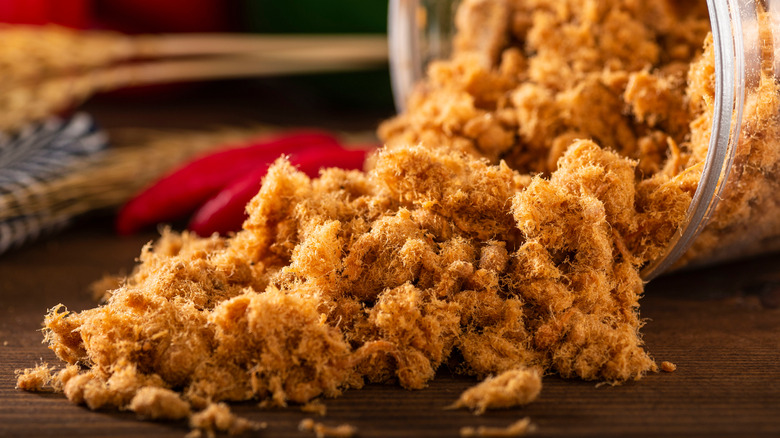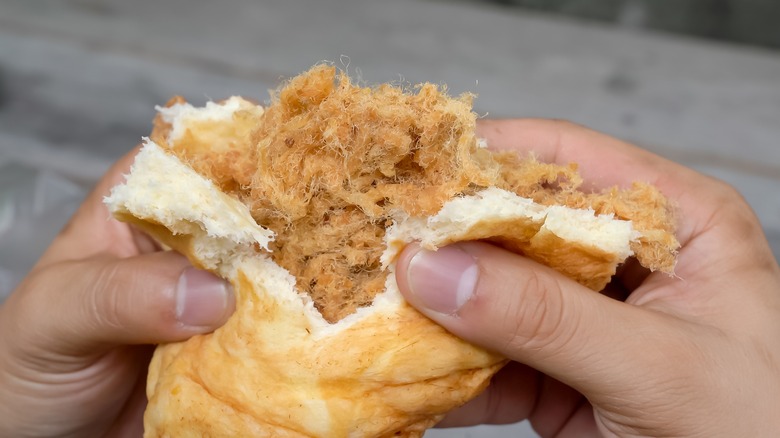The Savory Sprinkle That Delighted Genghis Khan Was Pork Floss
When away from camp, the soldiers of today stay fuelled for battle with ration packs that are dehydrated to save on weight. This practice has been the same for centuries. And who knew life on the move better than the Mongols? As the World History Encyclopedia explains, they were warrior nomads and herders. They endured difficult environments and knew the value of making food last. A large part of that traveling diet included fermented horse milk and dried-out meat.
According to Epicurious, Marco Polo documented Mongolian soldiers traveling with dried milk powder as well as dried meat to eat. Since Genghis Khan conquered much of Eurasia, this legacy has endured in cuisines from Vietnam to Japan in the form of pork floss. "Rousong" (肉松) as it is known in China, literally translates to "fluffy meat" and it is the wiry, filamented texture that really makes this savory, meaty condiment-slash-snack something quite different from classic American jerky.
Jerky, from the Quechuan word "ch'arki", is a technique of drying meat that's cut into strips, salted, and dried — by air and wind, and frequently also with smoke. Meat floss, by contrast, is first boiled and seasoned, then actively dried in a pan, or a bread maker, which saves a lot of work, according to China Sichuan Food. In order to remove all of the moisture, the already cooked meat gets mixed and broken down into fibers that slowly caramelize and dry out to create the signature fuzzy texture.
Dishes to try with pork floss
Pork floss shines both when augmenting savory flavors, as well as when called on to be a lone savory note against a sea of carbs. The more shredded the floss, the more you can think of it as an ingredient or sprinkle. The versions with more chunky and substantial pieces are salty snacks. Pork is common, but beef, fish, and chicken flosses exist, too.
As if miso and sprinkles had a baby that was somehow non-vegetarian. The classic place to find fluffy meat is on plain congee, which is an actual sea of carbs, but the same principle applies to the more modern trend of pork floss baked goods. These are rarely wholegrain breads, it's all about the contrast between very plain, soft, white, relatively bland bulk of the dish, and the intense, chewy, salty, sweet, and savory flavor bomb of the floss. Bakers have taken the contrast even further, going from white bread to plain cakes, doughnuts, and even rousong ice cream, which has been made in Taiwan since the late '70s.
Pork floss is also fantastic for adding an umami boost to already meaty dishes. Chà bông is the Vietnamese name for pork floss and though you can find it with rice and on baked goods as in the rest of Asia, it is also a popular addition to bánh mì, especially with pate.

